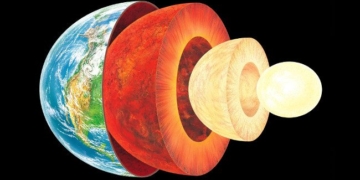Experts Build New Facility for Microgravity Experiments to Advance Space Research
The Magnetic Levitation Microgravity Experiment Facility (MEFEL), located in northern Beijing, stands 40 meters tall and utilizes a linear motor to elevate objects, allowing them to experience near-weightlessness for four seconds, according to a report by SCMP on July 20.

The MEFEL tower in Beijing uses a linear motor to raise and lower objects, recreating near-weightless conditions for four seconds. Photo: Weibo
MEFEL can conduct 100 experiments per day, consuming only about 1 kWh of electricity for each experiment, according to Zhang Yongkang, an expert at the Space Application Engineering Technology Center of the Chinese Academy of Sciences, the agency responsible for developing the new facility.
“Compared to traditional microgravity facilities like drop towers or parabolic flights, MEFEL saves a lot of money and time. This will be a significant advancement for pre-testing experiments intended for the Tiangong Space Station,” Zhang stated. The new facility can also simulate low gravity conditions to mimic the environments on the Moon and Mars.
For decades, scientists have conducted space experiments to understand how objects behave in microgravity environments, studying everything from how fire burns and crystals grow to the health changes experienced by astronauts living aboard the International Space Station (ISS). However, before reaching space, experiments need to be tested and validated through various ground methods—such as drop towers, parabolic flights, and sounding rockets—to optimize the scientific results obtained.
Traditional drop towers allow for an average of 2 to 3 experiments per day but require extremely durable instruments to withstand the deceleration process. In many cases, these instruments must be custom-made.
A few years ago, scientists began developing a new type of drop tower that could double the duration of microgravity experience. Inside this facility, the experimental setup is accelerated and launched vertically before being recovered to achieve free-fall conditions during both the ascent and descent. The acceleration process involves a linear motor that converts electrical energy into linear motion—similar to the electromagnetic launch systems used to deploy fighter jets from aircraft carriers.
In 2019, the world’s first facility of this kind began operations in Hanover, Germany. Named the Einstein Elevator, the 40-meter tower provides a four-second microgravity experience and can conduct up to 300 experiments per day.
Chinese scientists began developing electromagnetic launch technology in 2017, utilizing a 3-meter-long motor to achieve short-term microgravity environments.
Within MEFEL, the experimental setup will experience gravity at 1/100,000 of normal levels on Earth for four seconds. The research team has significantly reduced the deceleration process compared to drop towers, allowing standard equipment to be used directly. MEFEL is constructed with 16,000 high-strength bolts and has a structural accuracy deviation of less than 2 mm.
Zhang and his colleagues are developing a new generation of MEFEL, aiming for a microgravity experience duration of 20 seconds and a maximum experimental payload of up to 500 kg.


















































